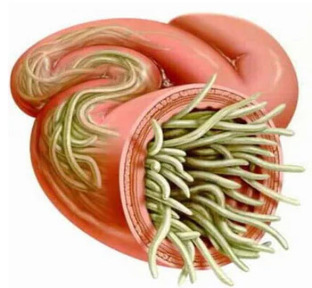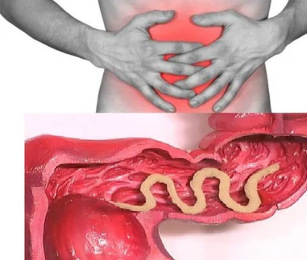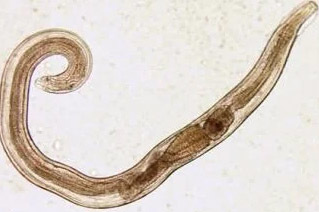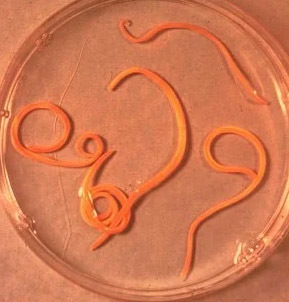Our there are about 280 worms of the species, which can grow into a living human body, in various diseases of the organs of the organisation. The frequency of the infection in the mouth of the man, it depends on the climate in the socio-economic situation of a given area (in the less-developed countries, especially those located in the tropical in subtropical area, the level of parasitic infection, which is much higher than in the economy of the developed countries.
The ways of human infection with helminths:
- Bioelements (infection of the animal mouse).
- Helminth infections, contagious (transmitted from person to person).
- Geohelminths (a disease caused by the parasites in charge of one of the life-cycle in the soil).

The factors that influence the manifestations of helminthiasis
Mode of penetration of the parasite into the body:
- The degree of adaptation of the worms to the human body;
- The population density (number) of parasitic specimens;
- The Habitat of the worm (the tissues of the parasites are living thick in the soft tissue in a luminal to live in the Lumina of the hollow iz of the bodies). Helminths, Some in various stages of both the luminal tissue of the shape. In the development of the larval stages of the worms have, as a rule, causes more severe pathological changes.
In the absence of re-infection, the number of adult parasites in the human body, is not increased. This function knows how to deal with helminth infection, with the infections caused by bacteria, viruses, fungi the protozoa themselves.
Worms in humans: symptoms and
Helminthiasis is a disease in which the phase characteristic of the 2 current (a sharp, two weeks, not two months) to chronic (several months, let us know).
The symptoms of the acute phase of helminth infections
The first signs of the disease may be by a variety of occur in the days (and often 2 to 3 weeks, ascariasis after 2 to 3 days after filariose the incubation period lasts 6 to do a period of 18 months).
The acute The phase of the parasitic infection, the most common symptom of the allergic reaction (it is for the development of the antibodies on the antigens have been migrating larvae of parasites). People are Often infected with worms, they appear on the skin, itching rash, a tendency to a relapsing course, and the increase of regional lymph nodes, it may lead to general or local edema, and the pain in my muscles and joints. Migration of the larvae of the parasite can cause pains in the chest, cough, asthma, disorders stool, nausea, the vomiting.
The acute stage of the helminth at the Same time, more and more of the infection accompanied by a severe disorder (a severe form of pneumonia, hepatitis, allergic myocarditis, hepatosplenomegaly (enlarged liver, in the spleen).
In the blood, increased numbers of eosinophils (eosinophilia) in a barrier to the normal numerical relationship between the protein fractions (dysproteinemia).

The signs of chronic helminthiasis
The symptoms of the chronic phase depends on the body "inhabited" by the parasites, and in the right way also plays an important role, because of their size, the number of the.
Thus, when a parasite in the intestines of single individuals, the disease may be asymptomatic (with the exception of the cases of very large parasites). The characteristics of the chronic phase of intestinal helminths as dyspepsia. Children are so greatly expressed asthenoneurotic, in pain. Z z a lot of infection of Ascaris may develop intestinal obstruction, obstructive jaundice in pancreatitis.
Consumers of all essential for the activity of iz the substance of the host organism, and worms, it causes indigestion, malabsorption of vitamins, minerals, carbs, protein of fat. At the same time, the waste products of the worms suppress the normal intestinal flora in the lower the immune power of the body.
People who suffer from helminthiasis, due to a weakened immune system, enhanced the cell division process (the research is permanently damaged the tissues of the parasites, which significantly increases the risk of malignant tumors.
The types of helminths, parasitic in the human body
The causative factors in human helminthiasis of SO2 kinds of worms: round (nematodes) in the housing (tapeworms in flukes).
Roundworms
Pinworm
So the parasites that cause pinworms is so small (to 10 mm), thin, stomach worms, which have a grayish-white color. The pride of not being infected by the food (through the mouth). The reason for that is the dirtiest of hands. The eggs of the parasite can remain in the soil, on the fleece of infected animals, unwashed fruit, the vegetables, etc., however, when enterobiasis cases of samsarajade (especially in children), which is derived from the scratching of itchy areas of the subsequent ingestion of the eggs. Pinworm larva develops within two weeks of the digestive tract. Turning into an adult worm of the parasite to the bottom to thin at the top portion of the large intestine.

Ascaris
Ascaris parasite is a large fusiform red-and-yellow, the smaller of 40 cm (females) in the 15-25 cm (female). Do not have a suction cup or other mounting, Ascaris was able to move the food towards the masses. The eggs, which the female parasite is excreted in the feces.
Infection with ascariasis only happen in the case of ingestion of the Mature eggs from the water, or the fruit, unwashed, in the vegetable, which contain the particles of the soil. After penetration of the egg in the intestine, thus the matured larvae. It then penetrates the intestinal wall, the following the blood comes into the heart, thence into the lungs. Through the lung alveoli roundworm larvae through the respiratory system, the re-entrants in the oral cavity. After re-swallowing the parasite reaches the small intestine, where they develop into adults. So a life for a period of 12 months, after which the die is combined with the feces. In one of the living host can be one of the many hundreds in individuals.
Whipworm
Whipworm, which causes trichuriasis white worms, parasitic in the beginning of the large intestine in the reach the size of 4 to 5 cm of the parasite of the Sources of sodium in the blood to tissues of the mucous membrane of the rectum.
Whipworm eggs, which the female in the intestine, come out with feces. Their development occurs in the context (optimal on the ground). Eggs, matured them in the larvae of the parasite enter the body through food, dirty hands, water, or unwashed vegetables sector in the fruit.

The Species Trichinella
The causative agent of trichinosis as a small, round mouth, in the 2 to 5 mm in length. Pride is not an infection by eating undercooked meat (from pork, the meat of the bear, a boar or). Penetrating in the intestine, the larvae of the parasite within 3-4 days to the Dawn of the country, and in the Mature individual. The lifespan of the worm for 40 days, after which the parasite dies. Proberably the intestinal wall, the larvae can penetrate into the blood circulation in the extract is to all of the organs of the human body, settling in the muscles. In this case, it is the most commonly affects the respiratory in facial muscles, in the muscles of the extremities.
In the early days of the invasion, the patients complain of pain in the abdomen. Then, after about 2 weeks, the body temperature rises to 39-40 ° C can occur on the skin, itchy rashes, the development of muscle pain, swollen face. In the same period of time, and in the case of mass infection, there is a high risk of death. After about a month of recovering pride and joy. The parasite is embedded spirally in the form of, where for, two years ago, has died.
In Ancylostoma necator
These two pigs was also similar to the biological features of a named disease. In this regard, as they have a common name to unite under the (hookworm). The worms, which reach a length of 10 to 15 mm, and the feed of the 12-p. small. It should be noted that it is one of the most common, but at the same time, rarely, to detect the parasites. The larvae of the worms can penetrate the human body through the skin by contact with infected soil. In addition, once in the blood, which, as well as in the roundworm migrate to the lungs through the bronchi, together with the otharkivajushche phlegm in the digestive tract. Ancylostoma parasite in the intestine, attaching itself to the intestinal wall. A parasite that feed exclusively on blood, bites penetrating the mucous membrane of the blood vessels in the injection of an anti-coagulant is an integral part of it. During the day, an adult person may, on average, to absorb of 0.05-0.35 ml of blood. Thus, the most characteristic symptom of helminthiasis anemia that is due to a lack of iron, and in changing the ratio of protein fractions (dysproteinemia).
Just have to
A tapeworm
If it is one of the biggest worms of length up to 10 up to 20 metres in length. The diseases that caused by the parasite called difillobotrioz. The developmental cycle of the worm starts with a fresh-water fish, or a crustacean. Life In the body of the host is the end of the broad tapeworm, larva, coupled with a sense of pride caviar, or the infected fish fillet. The achievement of the small intestine, the parasite attaches to the wall, within 20 to 25 days into the grow, not Mature individuals.
The Liver Fluke
The parasite causes opisthorchiasis it is a flat worm that can reach a length of 7-20 mm. it should be noted, however, that more than 50% of the cases of infection of liver Fluke (Fluke also known as the cat) are related to the people of Russia. The parasite larvae begin to develop after contact with the egg in the fresh water of the swallowing by the day). Furthermore, so as to penetrate into the body of the fish (the carp, the carp crucian, bream, roach). Human dignity is not an infection from the consumption of contaminated fish, the flesh of which is not passed sufficient heat treatment. The larva, iz, iz, of the liver Fluke of the small intestine, which can penetrate into the biliary ducts into the gall bladder, the mounting by means of two suction cups.
The beef in the pork tapeworm
They both almost identical in structure, the parasites reach a length of 5-6 meters. Infection with the beef tapeworm teniasis infection is due to eating beef or pork infected with the Finns (one of the forms of the interim helminthiasis). The successful Finns presented in the form of a whitish bubbles reached a size of 0.5 cm and are attached to the wall of the small intestine for a person in the 3 months to convert an adult. The waistband of the parasite, which is made up of more than 2,000 parts, is continually increasing. However, at the end of the segments, which contain eggs, break off the self to move through the large intestine to the anus, and then crawl out of the anus, or by releasing it into the environment with the feces. The most of the would be common symptoms of helminth infections is a disorder of the gastrointestinal tract.
Echinococcus
For this parasite, man is the intermediate host. A worm parasitic life in the form of the Finns in the body. The final host of Echinococcus – a wolf, a dog, cat or. The infection occurs through food, which is in contact with the animals, the objects in the environment, contamination of the eggs of Echinococcus. After entering the intestine, one of which is the development of the oncospheres (larvae shestigrannye). From the intestine they pass into the blood stream in a spread it all over your body.
Alveolar
This parasite, which is considered to be the species of Echinococcus was the cause for one of the most dangerous helminth infection (as of alveococcosis), which is similar to the gravity flow of cirrhosis into liver cancer. The infection occurs by the penetration of oncospheres (eggs, Mature larvae) in the intestine. There, the embryo emerges from the egg, and in penetrating into the intestinal wall, enter the blood stream. In addition, the blood circulation of the parasite is a member of the [spirits of the craft] the tissues in the organs of the body (most often localized in the liver). That is, if you are going to find the larvae of the main stage (set up with the multi-bubble, labrocyte). Each cell contains the embryo, the head of the parasite, which continues to evolve over time. Eurocity is a very aggressive design, and is constantly growing due to the increasing bubbles, also has the ability to grow in the liver, such as cancer metastases.
The diagnosis of helminthiasis
The diagnosis of worm infection include the following activities:
- a thorough history, it would be possible for you to identify the root causes of the infection;
- laboratory testing of stool, blood, content, 12P, of the colon to the rectum the perianal mucus, muscle tissue, lungs, sputum, bile. The analysis should be able to identify the eggs, segments or fragments of parasites. But it is the blood, increase in eosinophils is also a signal of the presence of helminthiasis.
- the diagnosis of a disease caused by the larval tissues, or stages of the parasites by serology (IFA, RSK, reaction of indirect agglutination, immunofluorescence analyse, etc).
- helminths of the detection, which is affect the liver to the tissues, it is assigned to, such as an ultrasound, a CT scan, in the endoscopic examinations.
Worms in humans treatment
The acute The phase of the parasitic infection, the patient was prescribed detoxication in the desensitizing therapy. In the severe course of the disease (a trematode of the liver, trichinosis) indications for the medical uses glucocorticoids.
Drug-specific therapy, as well As with regard to the nature of the agent that is assigned to a special de-worming chemotherapeutic agents.
In parallel, it is advisable to the patient is that of antihistamines in the chelators. In the final stage of the treatment, which involves the use of probiotics, normalizing the intestinal microflora.
Also known as the special sparing diet (the food of the children to be able to contain a little bit of digested the fat).
Antihelminthic therapy is The period of time since the patient requires strict adherence to personal hygiene (to prevent reinfestation). At the same time, for many helminth infections, a treatment that has to go through all of the family members of the person who is infected making contact with the constant.






































